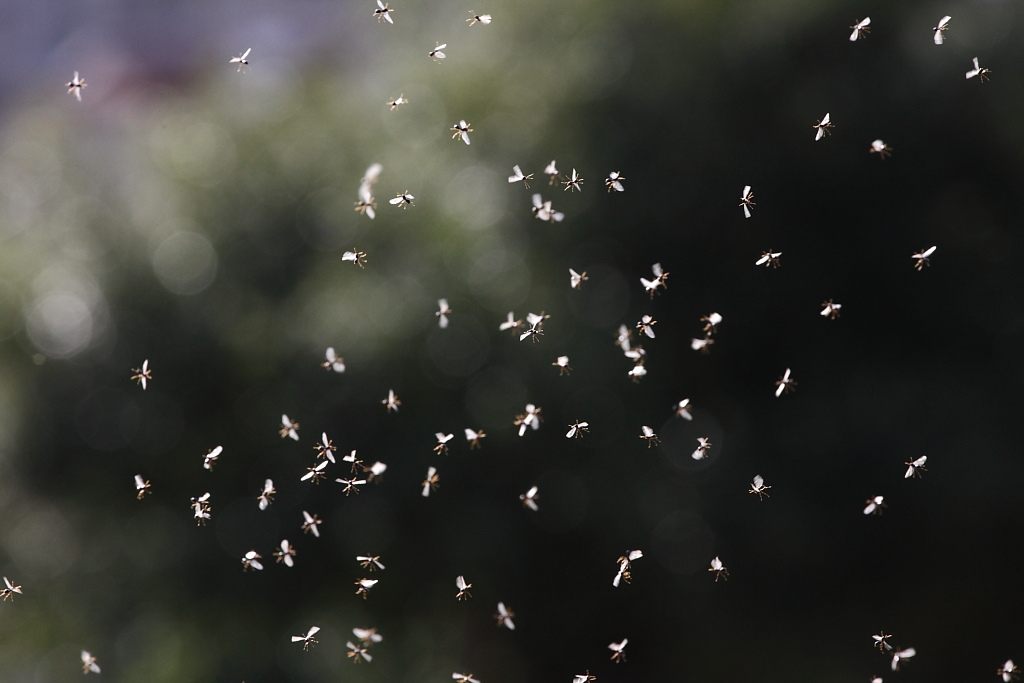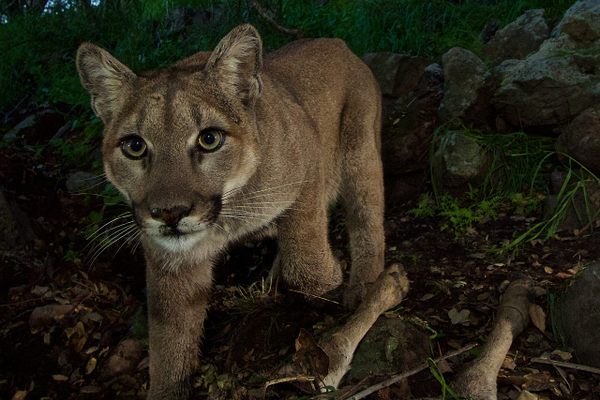The Upside of Freaking Out About Insects on Twitter
When people post about bugs and birds, ecologists can gain some solid data.

In the United Kingdom, it goes the same way every year. When the weather is just right—warm, dry, and not too windy—black garden ants (Lasius niger) crawl out from underground en masse and take to the sky in a mating ritual known as “nuptial flight.” In a moment, it seems, the insects are everywhere.
This very visible courtship routinely inspires a lot of attention from people. This July, the insects swarmed the courts of Wimbledon, where they became too much for some athletes and spectators to bear. Danish pro Caroline Wozniacki stopped—mid-match—to ask the umpire for bug spray. “You want to focus on playing tennis,” she said later. “Not eating bugs.”
Tweeters keep tabs on the insect activity, too. This year, #FlyingAntDay began trending on Twitter in Britain soon after the insects burst forth. The posts were a mixed bag—some dispatches, some jokes, some squeamishness bordering on meltdowns. One user welcomed the insect overlords. Another complained that he’d swallowed so many while cycling home that he’d spoiled his appetite for dinner. Yet another shared a photo of them pouring from a rift in concrete: “Epicentre, MY GARDEN.”
Ecologists are interested in these dramatic, short-lived natural phenomena, and want to know more about how factors such as climate and geography influence them. But even the most intrepid researchers can’t be everywhere at once, so some have begun to wonder whether social media streams might pour forth with useful information. After all, Twitter traffics in the ephemeral, transient—and immediate. The platform lends itself to reports of clouds of flying ants, clusters of house spiders, or swirling murmurations of starlings.
While tweeters don’t intend for their spellbound or sickened dispatches to become part of the ecological record, a team of researchers led by Adam Hart, an entomologist at the University of Gloucestershire, recently set out to see if these 280-word data points could be translated into useful scientific information.

Hart and his collaborators compared thousands of tweets about winged ants, indoor spider sightings, and starling gatherings to three ecology papers published in 2017 or 2018. “We had previously studied these three phenomena using nationwide citizen science campaigns, where members of the public had sent in data,” Hart says. “This meant that we had large, published datasets with which to ground-truth our Twitter-mined data.”
As the researchers explain in a new paper in Methods in Ecology and Evolution, the two modes of info-gathering often lined up pretty neatly. This was particularly true for temporal data—that is, exactly when the ants emerged. In some instances, the authors write, the tweet-data points “were so similar to the published data that Twitter mining would have yielded conclusions identical to those in the published dataset.” The datasets were in such agreement that Hart initially assumed he’d goofed. “I thought we had confused the two graphs,” he says. “It was only on really close inspection that I could see minor differences. That was an exciting afternoon because until that point we had no real idea whether this technique could generate anything remotely useful.”
In the case of starlings, the tweets also provided solid location data. (Though Twitter doesn’t carry geolocation data, up to 90 percent of users who tweeted about starlings added a geographical note.)

Twitter-mining won’t replace field work, lab analysis, or organized citizen science campaigns, but it might have a place alongside those data sources, especially for surprising, massive natural events most likely to make people stop, stare, and share, by reaching for their phones. “We need to consider such data as supplementary, not a substitute to other data that we, or citizen scientists, go out to collect,” says Mason Fidino, a quantitative ecologist at the Lincoln Park Zoo’s Urban Wildlife Institute who was not involved in the project. “The authors do a great job illustrating that these data are useful, we now just need to figure out ways to incorporate them into our models.”*
As one might expect, detail and specificity were generally lacking in the tweets. They didn’t carry enough information to address the hypotheses that the authors of the previous studies had put forth. For instance, an ecologist wondering about the effect of heat-retaining spaces, such as greenhouses or compost heaps, on ant emergence would find little but frustration on Twitter—only six tweets out of 2,345 mention them. “Few tweeters provided the necessary (possibly rather obscure) biological detail,” the authors write.
“I had the idea that people staring in wonder at murmurations would be bubbling over with enthusiasm to such an extent they would report all the nitty-gritty details we needed,” Hart says. “That was, of course, naive. When you are watching a murmuration, you are awestruck with the beauty and spectacle of the event, and those sentiments tended to be the content of the tweets—rather than comments on the weather, birds of prey hovering around, and the type of habitat.” The average observer is likely to be stunned—and it seems like #holycrap is a more natural reaction than #cloudyday, #hawk, or #marsh.
* This article was updated to add comment from Fidino.




































Follow us on Twitter to get the latest on the world's hidden wonders.
Like us on Facebook to get the latest on the world's hidden wonders.
Follow us on Twitter Like us on Facebook